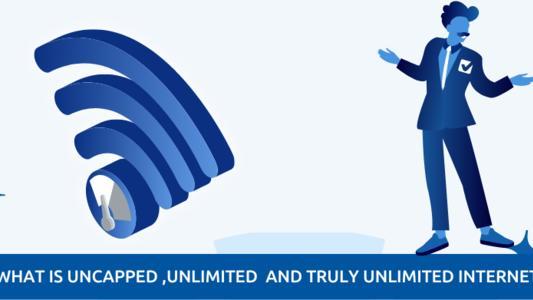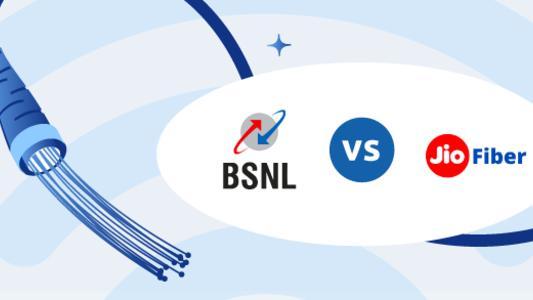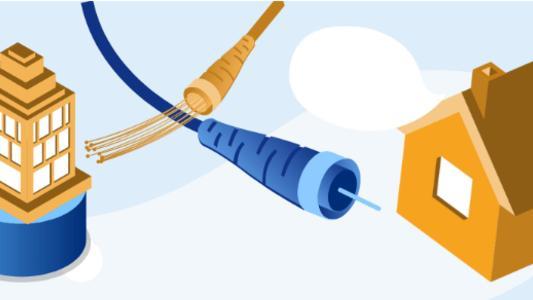Broadband VS WiFi: Which One Is Better For You?
Although the internet is simple to use, the technology and language used to do so might be difficult to grasp. Many people mistakenly believe that the internet, broadband, and Wi-Fi are just the same thing. They really aren't.
How often have you grumbled, "My internet is acting up!" when what you actually mean is that your broadband speed has slowed or that your Wi-Fi won't connect?
They are two completely different things.
Your ISP provider determines the dependability and speed of your internet connection. Your WiFi signal strength is determined by your home's wireless router.
But what is the true major difference between the two terms? Keep reading to learn just what you need to understand about the differences between broadband and WiFi.
The location of your router can have a significant impact on the quality of your Wi-Fi. The better your wireless signal, the closer your computer is to your router with a clear view of it.
What Is Broadband?
Broadband is a word that is often used to refer to high-speed Internet connection. The term "broadband" has a variety of connotations. But, it essentially entails a constant, high-speed connection. That being said, the definition of ‘high speed’ may differ from time-to-time.
While CATV is also an option for supplying broadband services to households, the Asymmetric Digital Subscriber Line (ADSL) technique and service, which is widely available through telecommunication companies, is currently the most frequently utilized broadband service.
The words broadband and high-speed are used interchangeably by the Federal Communications Commission (FCC). Cable TV, for instance, is critical to the delivery of internet services, which has reshaped public perceptions of home entertainment. So, simply put, broadband is just a link to the public Internet with a lot of capacity.
How Does A Broadband Connection Work?
In contrast to previous dial-up connections, which used a single line to transport a large amount of data, broadband delivers internet access by using several lines to transfer a large amount of data. The word "broadband" refers to the use of several bands to transport data.
In basic words, think of dial-up as a one-way street with only one car moving at a time, whereas broadband is a multi-lane motorway with several vehicles moving simultaneously. Each vehicle represents a data packet that is sent to you or vice versa.
The simultaneous transport of several data packets enhances the broadband internet's speed.
What Is Wi-Fi?
Wi-Fi is a wireless technology that provides high-speed Internet connection without the use of cables across a few hundred meters, using radio waves. It's a brand name for the 802.11b wireless Ethernet standard, which was created to enable high-speed access to big workplaces and commercial campuses.
It is presently the most frequently used home wireless LAN technology, having been extended for usage in LANs. In a simplified way, Wi-Fi is a wireless network that connects your cellular devices to the Internet without the use of physical connections.
For short-range wireless networks, including those found in airports, cafés, hotels, colleges, coffee houses, conference centers, and restaurants, Wi-Fi is the sole wireless technology now in use. Mobility is, without a doubt, the finest benefit of wireless networking.
How Does A Wi-Fi Connection Work?
All Wi-Fi connections use two radio frequencies, 2.4GHz and 5GHz, and operate in two basic steps: transmitting and receiving information. To connect to the internet for data, a request is made to your router as well as modem first. The modem then sends the required answer back to the router. The data is then wirelessly sent back to the device via the router.
What's Fixed Wireless?
Fixed wireless is a relatively new kind of wireless broadband connectivity that relies on transmission towers (also known as ground stations) rather than mobile networks.
Fixed wireless has the advantage of being faster than 4G and not suffering from the network delay issues that affect satellite internet. So it basically mixes the best of both broadband and WiFi.
However, fixed wireless customers must install specific transceivers in order for their devices to connect with base stations. Users must be within sight line of these towers for fixed WiFi to function.
Wi-Fi vs Broadband: Understanding The Difference
WiFi and broadband are often used interchangeably. However, this might cause some troubles for you, especially if you’re facing network issues and are trying to locate the root challenge. Here are some of the most relevant differences between WiFi and broadband.
The Medium
Both words are used to describe two primary types of communication medium. Whilst CATV is still an option for supplying broadband services to households, the Asymmetric Digital Subscriber Line (ADSL) technologies and service, which is widely available through telecommunication companies, is currently the most frequently utilized broadband service.
Wi-Fi is the de-facto wireless networking technology that sends data using radio waves instead of a physical channel like wires. Multiple mobile devices can interact via a wireless router or central access point while using Wi-Fi in infrastructure mode.
The Technology
Digital Subscriber Line (DSL), Cable, Fiber-optic, and Satellite are the 4 most popular types of broadband internet connection from which you generally obtain your Internet service.
- DSL is the least successful wireline transmission technology
- Cable pertains to the very same coaxial cable being used by local cable TV provider
- Fiber-optic is one of the more dependable broadband systems which provides a very much quicker Internet connection
- Satellite relates to broadband connection via satellite systems.
Wi-Fi is a trademark of the Wi-Fi alliance and a wireless connection in and of itself. Wi-Fi technologies are classified into four types:
- 802.11a
- 802.11b
- 802.11g
- 802.11n
The Range
Wi-Fi is not the Internet in and of itself; rather, it is a technology that depends on a real Internet connection and employs standardised methods to identify users and provide them with Wi-Fi access to the Internet.
The distance of a Wi-Fi signal from any particular access point varies depending on the device and the environment in which it is utilized. A common indoor wireless router configuration has a range of no more than 50 meters.
On the other hand, broadband transmits data utilizing a variety of broadband technologies and frequencies, enabling for more information to be transferred at the same time.
Routers transmit their signals on different channels, just like walkie-talkies and radios, and certain channels are clearer than others. If your Wi-Fi is transmitting on the clearest channel, it will be better.
Conclusion
Knowing the distinctions between broadband and WiFi allows you to better understand how your technology works and make more educated decisions about it. Right from determining the source of any internet issues you’re facing to selecting the right device or ISP for your connection.






